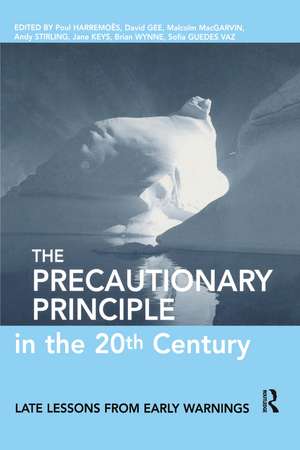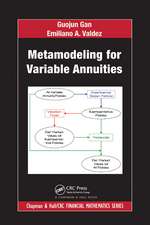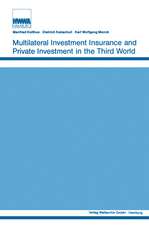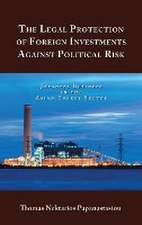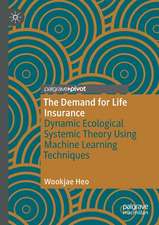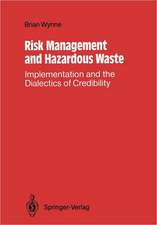The Precautionary Principle in the 20th Century: Late Lessons from Early Warnings
Editat de Paul Harremoes, David Gee, Malcom MacGarvin, Andy Stirling, Jane Keys, Brian Wynne, Sofia Guedes Vazen Limba Engleză Hardback – mar 2002
Preț: 712.64 lei
Preț vechi: 992.13 lei
-28% Nou
Puncte Express: 1069
Preț estimativ în valută:
136.38€ • 148.09$ • 114.56£
136.38€ • 148.09$ • 114.56£
Carte tipărită la comandă
Livrare economică 22 aprilie-06 mai
Preluare comenzi: 021 569.72.76
Specificații
ISBN-13: 9781853838927
ISBN-10: 1853838926
Pagini: 288
Dimensiuni: 156 x 234 x 27 mm
Greutate: 0.68 kg
Ediția:1
Editura: Taylor & Francis
Colecția Routledge
Locul publicării:Oxford, United Kingdom
ISBN-10: 1853838926
Pagini: 288
Dimensiuni: 156 x 234 x 27 mm
Greutate: 0.68 kg
Ediția:1
Editura: Taylor & Francis
Colecția Routledge
Locul publicării:Oxford, United Kingdom
Cuprins
Foreword by Tim O'Riordan * Preface by Domingo Jimenez Beltran * Introduction * Fisheries: Taking Stock * Radiation: Early Warnings, Late Effects * Benzene: a Historical Perspective on the American and European Occupational Setting * Asbestos: from 'Magic' to Malevolent Mineral * PCBs and the Precautionary Principle * Halocarbons, the Ozone Layer and the Precautionary Principle * The DES Story: Long-term Consequences of Prenatal Exposure * Sulphur Dioxide: from Protection of Human Lungs to Remote Lake Restoration * MTBE in Petrol as a Substitute for Lead * Early Warnings of Chemical Contamination of the Great Lakes * TBT Antifoulants: a Tale of Ships, Snails and Imposex * Hormones as Growth Promoters: the Precautionary Principle or a Political Risk Assessment? * 'Mad Cow Disease' 1980s-2000: How Reassurances Undermined Precaution * Twelve Late Lessons * Conclusions * About the Authors * References * Index
Notă biografică
Poul Harremoes is professor of environmental science and engineering at the Technical University of Denmark.David Gee is project manager for emerging environmental issues and scientific liaison at the European Environment Agency (EEA), Denmark.Malcolm MacGarvin is an environmental consultant based in Scotland.Andy Stirling is senior lecturer at Science and Technology Policy Research (SPRU), University of Sussex, UK.Jane Keys is a freelance environmental researcher based in the UK.Brian Wynne is professor of science studies at Lancaster University, UK.Sofia Guedes Vaz is an environmental engineer who has worked at the EEA on reporting, targets and emerging environmental issues.
Recenzii
'One of the most useful, comprehensive and readable books on environmental issues that I have ever read.'Tom Davey, Environmental Science and Engineering Magazine'Policy makers concerned with climate change or genetic modifications should read this collection of early warnings wilfully ignored.'New Scientist'The real value of this book is that it is a refreshing shift away from rhetoric towards a far more informed and careful analysis of precautionary action and the precautionary principle.'Journal of Environmental Law'Makes excellent and thought-provoking reading.'Journal of Risk Research'This is a valuable book, full of sensible discussions, useful insights and helpful guidance for the future.'Cass R Sunstein. The Yearbook of European Environmental Law volume 6'I commend this to all who have an interest in environmental hazard and risk assessment and public policy.'Journal of the Royal Institute of Public Health
